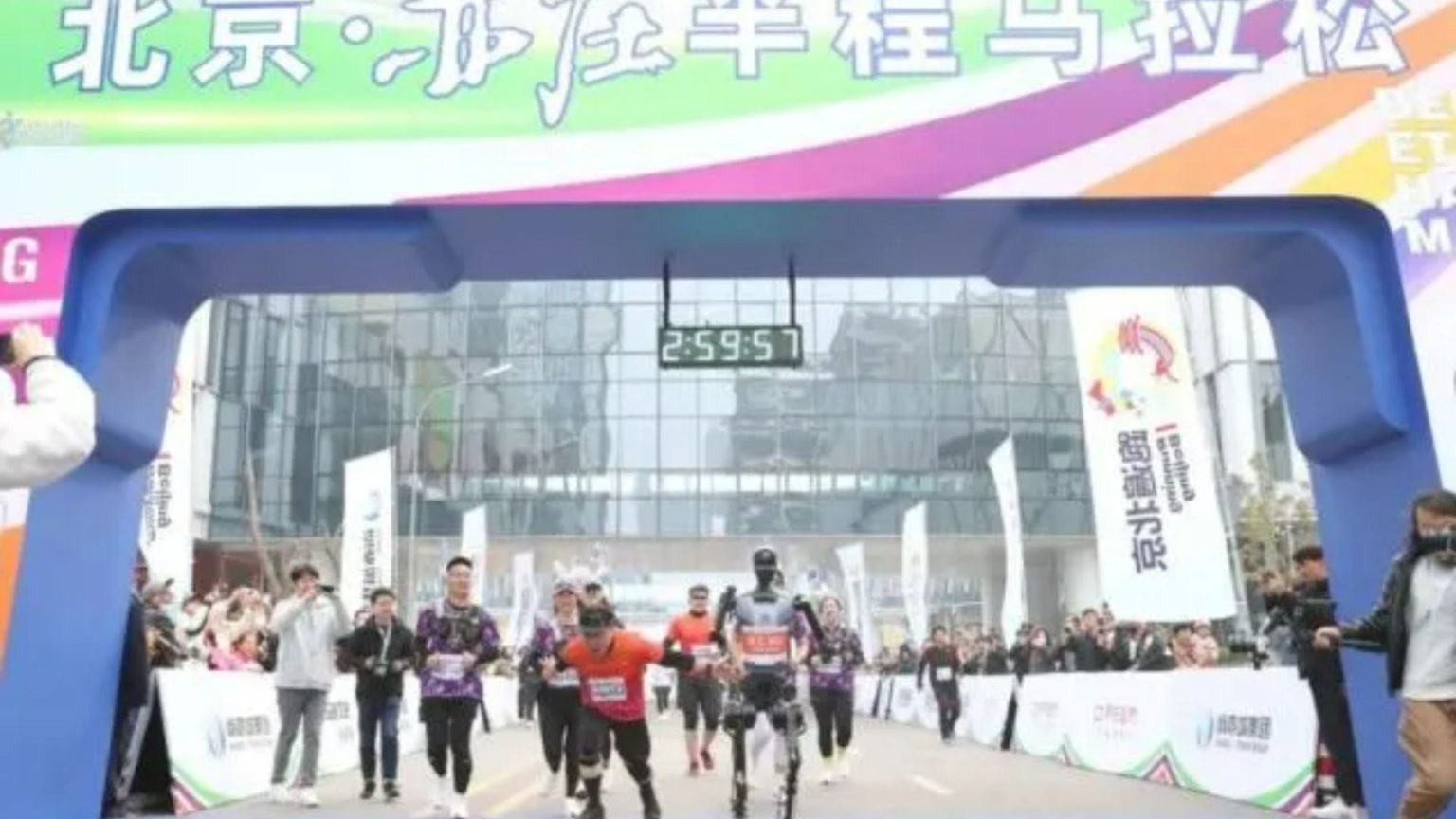The world’s first man vs. machine half-marathon is set to take place in Beijing this April, pitting cutting-edge bipedal robots against 12,000 human runners in a 21-kilometer race. This unprecedented event marks a significant milestone in the development of humanoid robotics and highlights China’s growing prominence in the artificial intelligence arena. Dozens of two-legged robots from 20 different tech firms will line up alongside their human counterparts, creating a unique spectacle and a real-world test of robotic capabilities. The race will not only showcase the advancements in robotic locomotion and endurance but also offer a direct comparison between human and machine performance in a demanding athletic context. The event symbolizes a convergence of sport, technology, and national ambition, reflecting China’s drive to establish itself as a global leader in artificial intelligence.
The participating robots, hailing from various manufacturers within E-town, a state-level industrial area in Beijing’s Daxing district, must adhere to specific criteria. These include a humanoid form, bipedal locomotion (excluding wheels), a height between 0.5 and 2 meters, and a minimum leg extension of 0.45 meters from hip joint to foot sole. Both remote-controlled and fully autonomous robots are permitted, and battery changes are allowed mid-race. This carefully designed framework ensures a fair competition and focuses on evaluating the core capabilities of bipedal robotic design. These stringent requirements demonstrate the organizers’ commitment to showcasing the most advanced and representative humanoid robots currently in development.
One of the leading contenders is “Tiangong,” a humanoid robot developed by China’s Embodied Artificial Intelligence Robotics Innovation Centre. Tiangong has already demonstrated its running prowess, achieving an average speed of 10 km/h and participating in a previous half-marathon, albeit not completing the entire race. The upcoming event represents a crucial test for Tiangong, providing an opportunity to prove its endurance and compete against both human runners and other advanced robots. Another notable participant is “Tien Kung,” also a bipedal robot, though with a slower reported speed of 6 km/h, suggesting Tiangong might hold a competitive edge. The involvement of these highly anticipated robots underscores the significance of the event as a platform for demonstrating and evaluating the latest advancements in humanoid robotics.
The Beijing half-marathon is more than just a sporting event; it signifies China’s strategic focus on humanoid robotics as a key driver of economic growth and technological self-reliance. This emphasis aligns with China’s broader ambition to compete with the United States in the global technology race, particularly in areas where the US has sought to restrict China’s access. By hosting this groundbreaking competition, China aims to showcase its capabilities and progress in a field with vast potential for future applications. The event serves as a tangible demonstration of China’s investment and commitment to pushing the boundaries of robotic innovation.
Beyond the competitive aspect, the man vs. machine marathon offers a unique lens through which to observe the evolving relationship between humans and technology. The race provides a platform to contemplate the potential of humanoid robots, not merely as competitors but as future collaborators in various fields. This could include roles in manufacturing, healthcare, and even disaster relief, where their physical capabilities could complement and augment human efforts. The event fosters a discussion about the integration of robots into society and their potential to address complex challenges.
The Beijing half-marathon stands as a testament to China’s ambition in the realm of artificial intelligence and robotics. By orchestrating this unique event, China aims to demonstrate its technological prowess on the world stage and underscore its commitment to innovation. The race not only tests the limits of current robotic capabilities but also ignites a broader conversation about the future of human-robot interaction and the potential for collaborative advancements. The event symbolizes a convergence of athletic competition, technological innovation, and national strategy, highlighting the growing significance of robotics in the 21st century.


